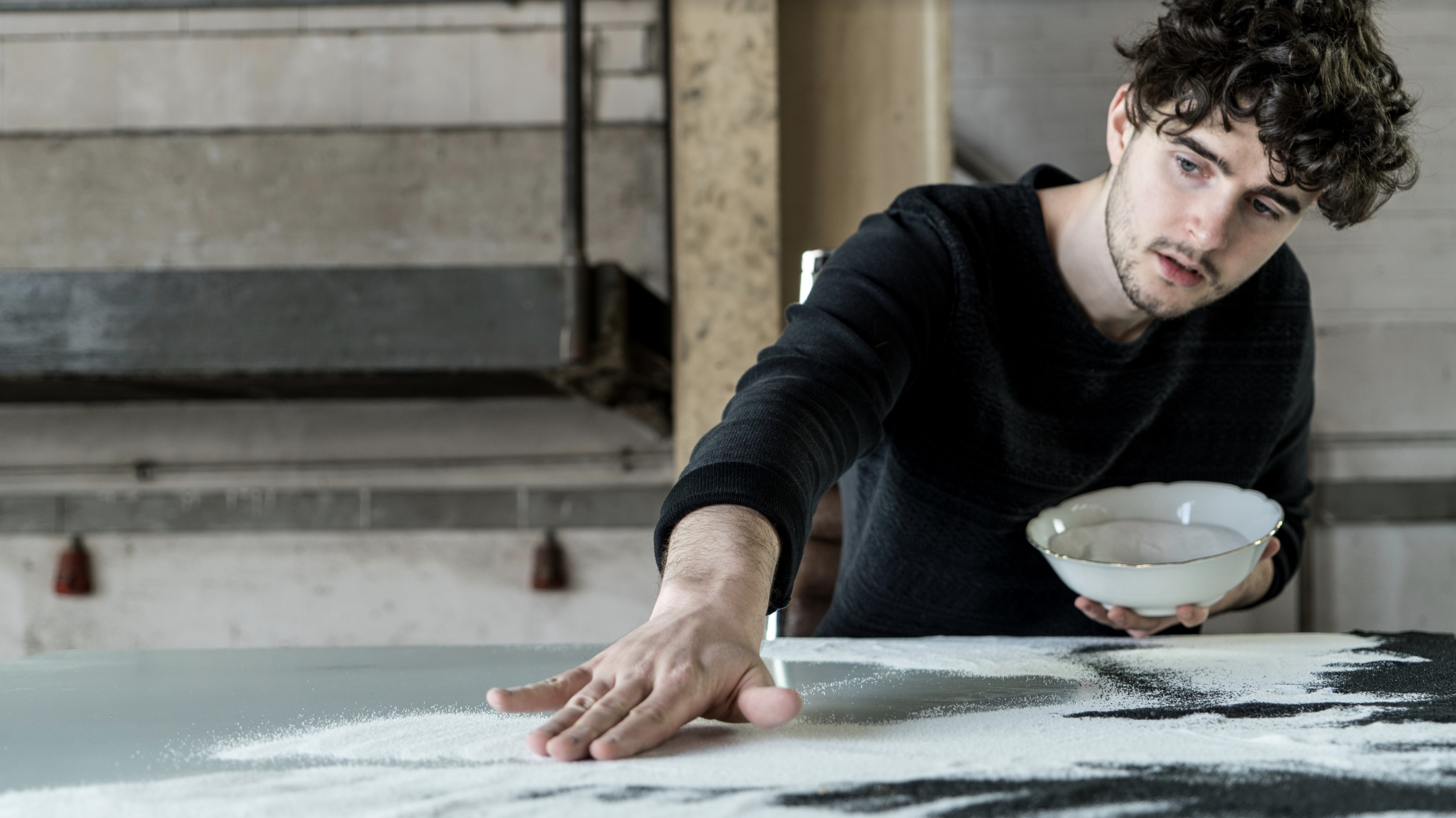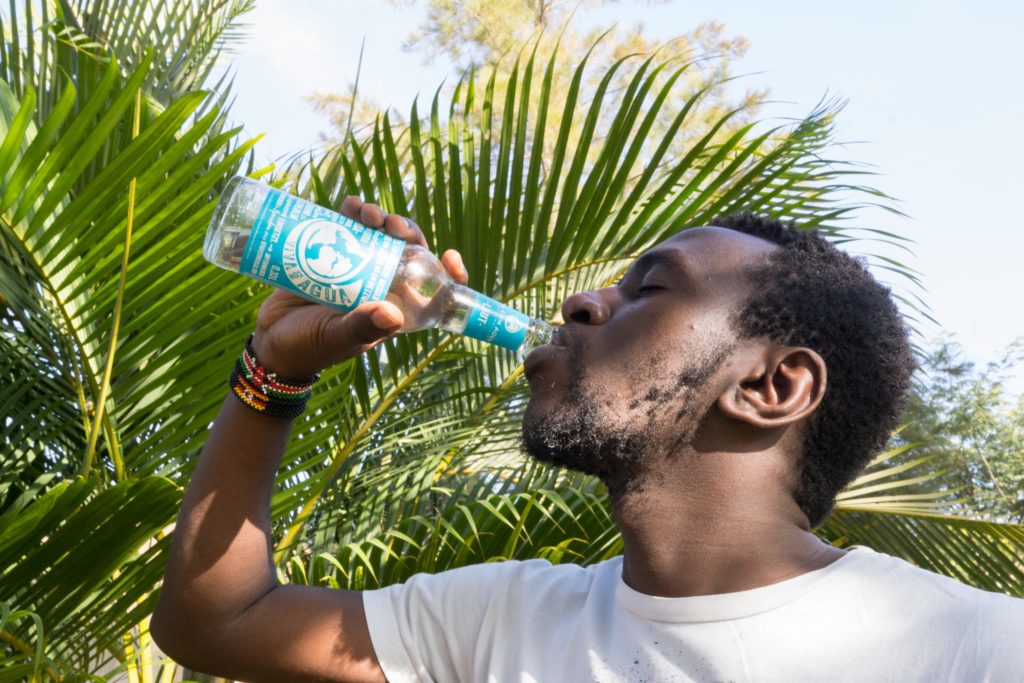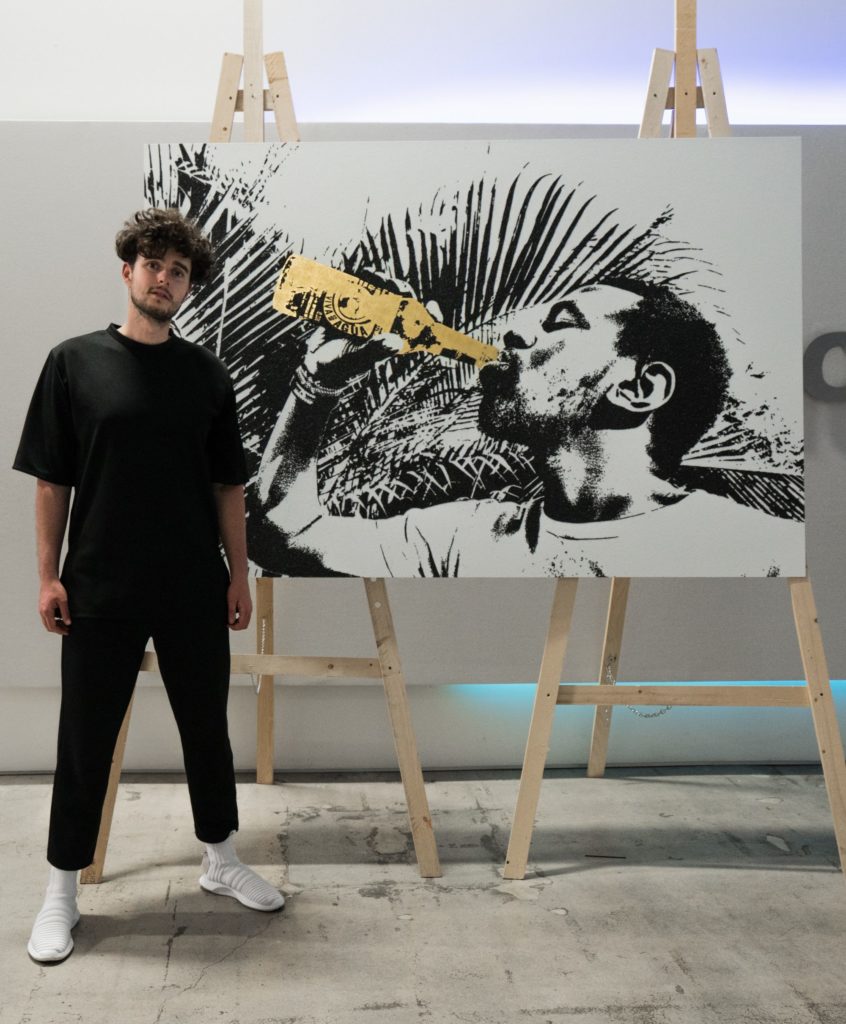Some 2.1 billion people worldwide lack access to safe, readily available water at home, and 4.5 billion lack safely managed sanitation, according to a 2017 report by WHO and UNICEF. The all-profit organization Viva con Agua is trying to change this. Founded in 2006 by a group of friends around Benjamin Adrion, former soccer player at FC Sankt Pauli in Hamburg, Viva con Agua’s goal is to improve access to clean drinking water and sanitation all over the world. They work together with over 10,000 volunteers, fundraising through charity events and collaborations with artists, musicians and sportspeople. In 2017 Viva con Agua set up a crew-based project in Uganda and invited German artist Tim Bengel to visit. Using digital photos as his starting point, Tim creates handmade versions of the images by implementing black and white sand grains in place of pixels and gold leaf for highlights. Leica Camera provided Tim with a TL2 and Leica Sofort camera to document his journey and capture images for an exhibition in LA, to raise funds for Viva con Agua. We spoke with Tim about his experiences in Uganda, the role of photography in his creative process and the importance of sharing your work.
Find out more about the Viva con Agua project
When did you realize your passion for art and the desire to become an artist yourself?
My curiosity for art began with my first visit of the Staatsgalerie Museum in Stuttgart. At the age of nine my mother took me to the museum and I just couldn’t understand why these child-like paintings were called art. That was the moment I started to question: What is art? And what is an artist?
Who or what would you describe as your biggest influences?
My biggest influence is my own desire to do things differently. It is not good for an artist to have big idols or try to be the next Picasso. Be the first you!
What role does photography play in the creation of your innovative large-format artworks?
My work is to transform a digital image into a unique artwork made from black sand, white sand and gold leaf. All my works are based on photography and my camera is important to collect impressions from my journeys around the world.
You travelled to Uganda with Viva con Agua. Can you tell us a little more about the project and how this collaboration came about?
Viva con Agua is a non-profit organization based in Hamburg, Germany. They are raising money and awareness to support people, who have no free access to clean drinking water.
I don’t want to be a political artist, but water is life. Without clean drinking water nothing could exist, not even art.
How would you describe your experiences in Uganda?
We went to a little village 4 hours away from Kampala, the capital of Uganda. In comparison to Germany the people lack a lot of things, which we take for granted, such as electricity or toilets. The people live in very small clay huts, which are actually one room for the whole family. Thanks to Viva con Agua they now have a well for accessing clean drinking water next to the village.
For me it was nice to see that Viva con Agua also starts a new chapter in Uganda, where Ugandans themselves get involved, like Nobert, Papa and Adam. They are engaged in improving things within their own country. I learned so much from the trip with Viva con Agua to Uganda and I hope that one day I can give something back.
After returning from Uganda, what were the next steps in creating the artwork you revealed in LA?
Actually, the work started here in Los Angeles. It was my first time working outside of Germany and an exciting experiment for me, as well. Creating my art is a complex process, for which I need different types of sand, adhesives and varnish. It was not easy to find my materials in the US, but in the end it worked out very well.

Your art is a fine example of craftsmanship. How did you come up with the concept? And how did you learn the skills you require to create such impressive work?
The technique is based on the collage technique. The basic idea is to stick something onto paper or canvas. I developed my technique over the years and wasn’t inventing something totally new. There were artists before me, who have worked with photography, collages, glue, sand or gold leaf. But my combination of all these things is new and unique at this moment.
Your use of video to reveal your art plays an important role in sharing your work with people all over the world. When did you realize the power of this mechanism and why do you think it is so successful?
I just asked myself: How can my art reach many people at a low cost? A viral social media video was the answer. The videos help the viewer to understand the basic process and its uniqueness. I don’t make the videos as a tutorial, but to make people curious about my art and art in general. The reveal is important, because that’s the moment when people decide: I need to share this with my friends!
To what extent do you think the way, in which people experience art is changing?
Art is going to be more democratic. The people, who reach a large audience via social media will be more successful. Galleries and museums will exhibit the artists, who attract more visitors. On one hand that gives more power and freedom to the artists. Everyone can publish their work now on Instagram and become an self-managed artist. On the other hand, it could lead us to a world of mainstream art. Art shouldn’t be about quantity, but always about quality.
Where do you see your own work in ten years time?
In ten years, my work will be totally different to what it is today. My sand and gold works are just the first chapter in a long art career. I am already exploring new techniques to question the art world itself.
How was it shooting with the Leica TL2 and the Leica Sofort?
It was fun! In the village in Uganda some of the kids had never seen their own face before. That may sound unbelievable to some, but as they don’t have mirrors, smartphones or cameras, they just don’t have the possibility to. So when I took photos of the kids with my Leica Sofort, it was a magical moment for all of us. It was so exciting, as the photo developed and the image appeared. Imagine how an 8-year old boy or girl feels, when they see themselves for the first time in life! It was so impressive. I also got some great shots with the Leica TL2 as well, including the image that served as the basis for my new sand and gold work called “Water is life!”
Where did the reveal take place in LA and how did the event go?
Viva con Agua organized a great exhibition at the Pixomondo film studios. Among their many projects, the people at Pixomondo do the special effects for Game of Thrones. The studio was very crowded and people came from all along the West coast to LA. Some even came from New York to see the reveal. I was really happy that everything went so well!
What do you have planned for the near future?
During the next months I have a lot of group exhibitions around the world: Los Angeles, San Francisco, Monaco, Singapore, Paris and Stuttgart. Nevertheless, I am more of a fan of solo shows, so I will focus on that for autumn and winter. My plan is one big solo exhibition in America and one in Europe.
What advice would you offer to anyone looking to start out as an artist today?
An artist can’t choose to become an artist. If you don’t feel the urgent need to become an artist, don’t do it. Open a bar or a nice restaurant instead.
To see more of Tim’s work and learn more about his creative process you can visit his website or Instagram.






Comments (4)